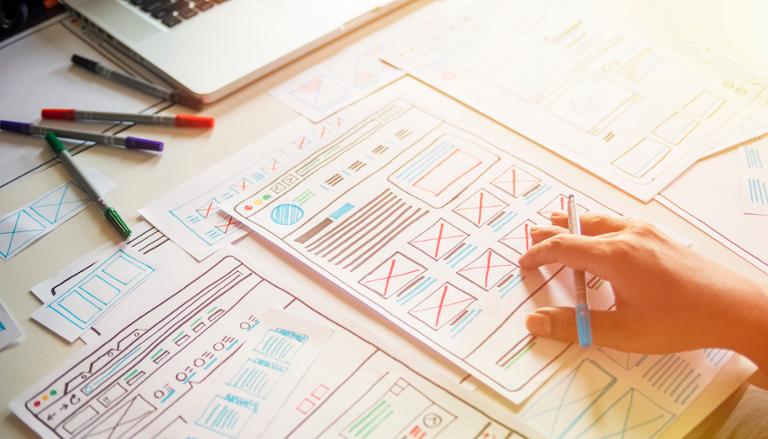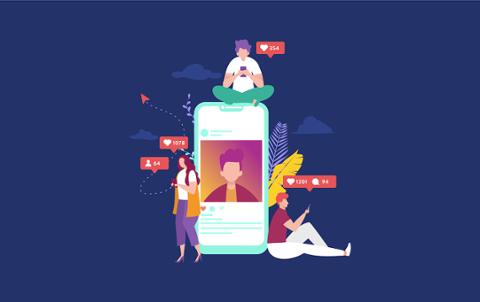In the world of user experience (UX) design, where aesthetics are subjective and intuitive reasoning differs from person to person, job candidates for UX positions at companies big and small better come ready to defend their designs… and bring their own questions to challenge the modus operandi of their potential employer.
UX designers are concerned with how users “flow” through a particular design, and how much friction users experience as they interact with the software (and the hardware). Their work is often “invisible,” in the sense that users sometimes don’t even realize how they’re being expertly guided through an experience.
Because of the importance of this “human factor,” anyone applying for a UX job should explain (with real-life examples) how they absorb user feedback and empathize with what customers need; it’s not just about your “hard” design skills.
Prepare for Open-Ended Questions
Jon Halk, UX designer at TextNow, says that, at their company, the hiring process starts with a portfolio review. The interview is driven by the candidates themselves, with open-ended questioning designed to draw out their ideas and process.
“We try to leave it open-ended to understand their thought process and their rationale behind their decision-making,” Halk said. “It’s hard to talk about design without looking at something—that’s a good way of figuring out how they solve problems.”
Here are some examples of these open-ended, design-focused questions; as you might expect, they use the candidate’s existing work as a jumping-off point.
- Why did you choose to use an icon as opposed to a label?
- How did you make decisions on what to include, and what didn’t you include as part of the process?
- Why have you chosen to go with a certain structure and prioritize information in a certain way?
Candidates: remember that your interviewer has no doubt spent considerable time reviewing your portfolio, and will no doubt want to ask about why you made certain decisions. In addition to reviewing any work you send as part of your application, it’s worth spending some time sorting through any other projects you have online—just in case the interviewer decides to ask about those, too (some companies love trying to trip you up a bit in interviews).
“Design is a lot about the notes you don’t play—we’re looking for people to cut things from design to make it a better experience,” Halk added. “I’m generally looking at principles over the technical skills. It’s more important for the applicant to convey how they solved the problem as opposed to what tools they used.”
Willingness for Feedback
UX design is a very feedback-heavy field, and Halk is looking for people who see that as the nature of the design process. Candidates must be open to feedback: “We expect someone coming in for a job to have looked at the app, and let us know what changes they would make, and that helps us understand if they’re going to be candid with us, which is just as important.”
For example:
- Describe a time you had to give a team member critical feedback on something you disagreed with: How did you handle that?
- How would you approach a design problem from the perspective of multiple stakeholders?
Product Sensibility is Key to UX
For Fred Lee, Small Planet’s chief experience officer, trying to figure out if the UX design applicant has any sort of product sensibility is a key goal during the interview process. Like Halk, he’s looking for designers who will defend their process and design decisions.
Lee also cautions applicants against coming into the shop and putting up a front as the all-knowing UX wizard who solves all problems no matter how esoteric.
“Don’t be afraid to not know the answer to a question. That’s OK—if you claim to know something you don’t, we can usually ferret that out,” he said. “Just be really clear: ‘I don’t know After Effects or motion graphics, but I’m willing to learn.’ Have a point of view—don’t be so eager to please that you’re just saying ‘yes’ to every question that comes your way.”
Here are examples of questions that you should always, always be honest in answering:
- What tools do you use? Do you work in spreadsheets, or standups?
- What is your specific role in your current company and your latest projects?
- How are you at interacting with developers and producers?
- How do you set priorities?
“Be prepared, come in knowing a little bit about us as a company—it shows a lack of serious intent if you come in and have no idea what we do,” Lee added. “Knowing why you’re interested and having a feel for what you might bring to the table is important.”
An interviewer might ask you questions designed to ferret out your larger plans; make sure you prepare for these:
- What other kinds of places—startups, agencies, big companies—are you looking at?
- Why here in [city or state]?
UX Design: Necessary Skills
It’s also helpful to know which skills are considered “foundational” to UX/UI work. What do employers want, and which ones do you know well enough to emphasize during an interview?
For a closer examination of UX skills, we can turn to Burning Glass, which analyzes millions of job postings across the county, and does a great job of breaking down skills into discrete categories:
Necessary skills are the lowest barrier to entry; they are also skills that are often found in other professions, providing a springboard for people to launch into a career in UI/UX.
Defining skills are the skills needed for day-to-day tasks in many roles.
Distinguishing skills (advanced skills called for occasionally) that truly differentiate candidates applying for various roles. As you might expect, there’s a lot of education and training necessary to master these.
If any of these are mentioned in the job posting, it seems likely they’ll be brought up during the job interview. Prepare appropriately; rehearse your answers to potential questions long before you reach the interview itself. Good luck!
Related UX Designer Jobs Resources:



